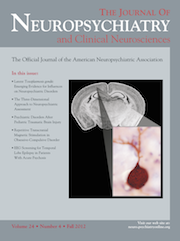Do Nano-Pore Zeolites Improve Damaged Blood–Brain Barrier Operation?
To the Editor: The blood–brain barrier (BBB) contains microvascular endothelial cells (ECs) linked by tight junctions, which results in limit communication between the plasma and the brain. ECs restrict the diffusion of large or hydrophilic molecules into the cerebrospinal fluid (CSF), while allowing the diffusion of small hydrophobic molecules.1 One important molecule that must not pass the BBB is human serum albumin, with an ellipsoid diameter of 85 Å.2
Zeolites consist of micro-sized crystals that have a network of nano-pores (Chen B: Investigation of molecular sieve crystallization by dry gel conversion. Ph.D. dissertation; University of Western Ontario; Canada, 2007). The high-silica zeolites with Si/Al of 10–100 are categorized as hydrophilic zeolites, which are generated by direct synthesis. The low-silica zeolites (Si/Al <10) are categorized as hydrophobic zeolites. The pore size of hydrophobic zeolites has a range of 0.4 to 0.8 nm, which is physiologically able to restrict the diffusion of various molecules into the CSF.3
On the other hand, zeolites have many in-vitro and in-vivo applications to adsorb or to trap materials. A report has shown that the zeolites may interact with human bile; another showed that zeolite-Y powders are activated with Fe3+–DETC complexes that are capable of trapping NO radicals; and the natural zeolites had good performance in removing heavy metals from aqueous solutions. Also, the adsorption properties of zeolites were used in recovery of nitrogen and phosphorus from human urine.4
We hypothesize that if the zeolite solution is prepared and injected into the blood, these zeolites may accumulate behind the damaged BBB to improve its operation. Surely, clinical data must be collected to uphold the safety of this hypothesis.
1 : Handbook of Behavior, Food, and Nutrition. New York, Springer, 2011, pp 23–70Crossref, Google Scholar
2 : [Size of a human serum albumin molecule in solution]. Biofizika 2001; 46:423–427Medline, Google Scholar
3 : Zeolites in Industrial Separation and Catalysis. New York, Wiley-VCH, 2010, pp 6–7Crossref, Google Scholar
4 : Recovery of N and P from human urine by freezing, struvite precipitation, and adsorption to zeolite and active carbon. Bioresour Technol 2007; 98:3112–3121Crossref, Medline, Google Scholar



